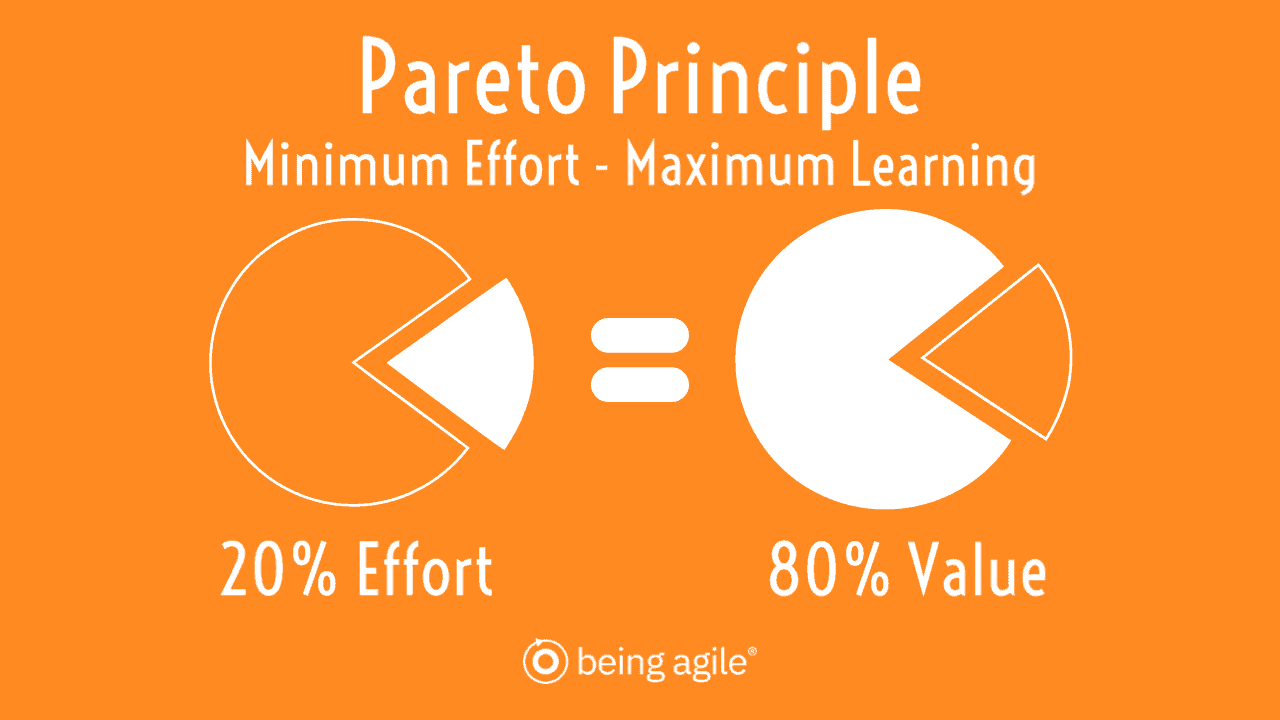Often when a solution is scoped there are more features and options identified than there is time and resource to complete. A key aim of agile is to deliver a solution that takes the optimum approach to delivering a solution that is fit for purpose and satisfies needs enough to be a viable solution for adoption.
Vilfredo Pareto was an Italian economist who noted the 80/20 correlation in 1896. He showed that 80% of the land in Italy was owned by 20% of the population. There is also a story that he observed 20% of the Pea plants in his allotment produced 80% of the Pea harvest. This is certainly true of the Black Current bushes in my garden!
We can observe this in may things, for example, take excel or word software, how many of the features and functions of the software do you use 80% of the time, that are most useful and valuable to you when using it? Probably less than 20%!
If we use the Pareto Principle we would look for the 20% of the solution that will deliver 80% of the value.
We can use Pareto to help us to define our Minimum Viable Product, what 20% of time and resources (effort) will we use, to create 20% of our product, that delivers 80% of the value?

We can use the Pareto principle to help us to define our MVP, Minimum Viable Product. What is the 20% of effort we can put in, to gain the maximum amount of learning?
Consider some of the things you use, or do everyday. Can you identify the Pareto principle?
What 20% of what you do delivers 80% of the value?
In business often 20% of our clients generate 80% of our profit – consider your clients and who are your top 20%?
We can also consider the opposite too, the bottom 20% of our clients too, those what cost us 80% of our effort!
We can also use Pareto to review our product/service mix.
Do 20% of your products deliver 80% of your sales? Again we can also consider the opposite, which 20% of our products cost us? Can we refine our product offering towards our Pareto clients?
What 20% of the features of our product do our clients use the most? What 20% of our product delivers 80% of the value to our customers?
When we are limited for time and resources and we are forced to make choices, we can look to prioritise our top 20%, and review the viability of sustaining our bottom 20%.

I’m Belinda and this session is a quick little session on the Pareto principle. So the Pareto Principle I absolutely love, as a principal it was established a long long time ago by an economist wilfredo pareto.
So the tale goes, he observed that in his allotment that eighty percent of the produce of his pea plants was coming from just 20% of his plants, 20% of the allotment was producing eighty percent of the produce.
He also observed this in other areas as well and came up with this idea of the pareto principle the 80 20 rule.
When we think about the 80 20 rule, when we’re thinking about our projects, or what we’re doing, and if we’re perhaps overwhelmed, and we haven’t got the time and budget that we want to be able to do something so we have to do something with less.
The pareto principle is a really nice concept for when you’re in that position.
In agile we talk about the idea of a minimum viable product (MVP) so I’m going to combine those two ideas in this session.
If we think about the pareto principle and we also think about this idea of a minimum viable product – what’s the 20 percent of the effort that we can put in, that’s going to generate the 80% of the value.
So what can we do in terms of delivering 20% of our actions, and 20% of our resources, to deliver 80% of that value, and that potentially is our minimum viable product.
If you think about just something simple like using your computer or your phone you’ll probably find that you use 20% of your apps 80% of the time, and you’ll also find that there’s a bottom 20% as well!
So we can look at the opposite as well, what is the bottom 20% that delivers the least value, or sometimes even costs us to deliver. We want to try and limit that if we can.